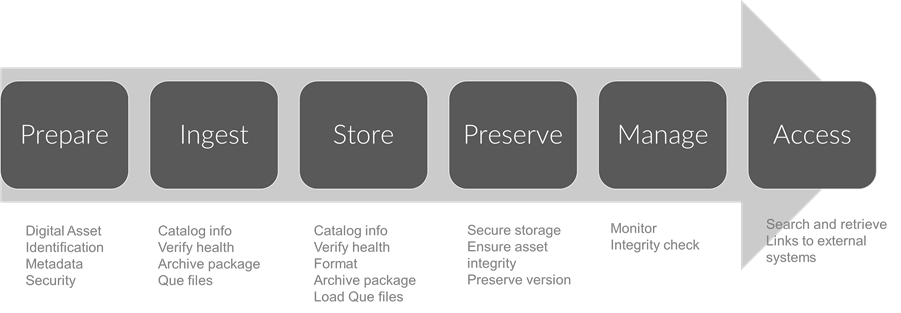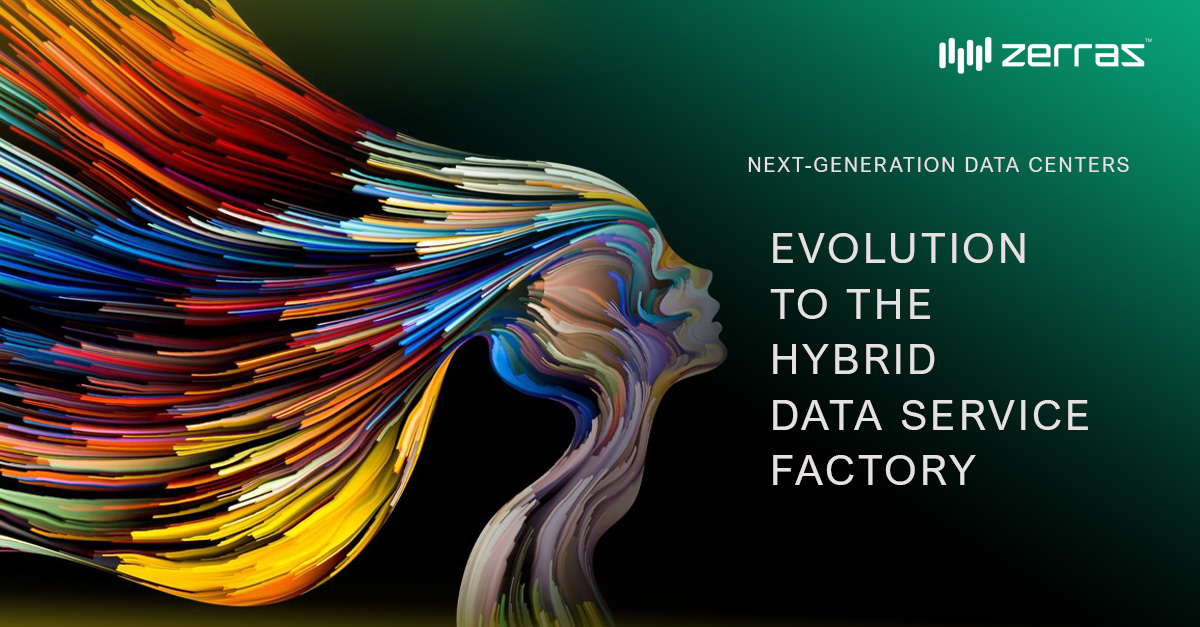Next-Generation Data Centers - Why it matters
Technology companies and architects define and describe next-generation data centers in different ways since using a generic or tier classification does not cut it anymore. It’s no longer simply an industrial location for housing servers, network infrastructure, and power. Fast-changing technologies, market trends and industries make it problematic to identify the make-up of future data centers that would become a one-stop solution for every business today. As data integrity increasingly deepens into the critical success factor of a digital enterprise, so will its source of competitive advantage become rooted in the cost-efficient production capabilities of moving and storing data.
The truth is that data centers of the future will likely not deliver the same types of services for every business – or level of efficiencies. Some data center types have consistently evolved and gained tremendous economies of scale thanks to twenty years’ worth of innovation, mainly in areas of distributed computing, virtualization, and public cloud service models. Application programming interfaces (APIs), and web services have also changed the development and deployment processes of IT operations crucial to business continuity. The evolution of IT has been quick to transform while total cost of ownership (TCO) and total cost of usage (TCU) will continue to be the driving force behind data center capabilities and investments.
Next-generation data centers: the hybrid data service factory
The purpose of the modern data center physical facility in an enterprise is designed to house, share IT operations and equipment to store, process, and disseminate data and applications. The intention is to use its installed network of applications and storage resources to securely store and move data created at locations across multiple sites and boundaries. As such, next-generation data centers will become hybrid data service factories that will meld the physical and the virtual properties of data centers to enable flexibility and business fit.

Data centers of the future are simpler, more adaptive, and optimized to respond to disruptive change. It allows new and legacy architectures to coexist in a single, convenient ecosystem.
Therefore, data center managers and IT organizations of next-generation data centers will be expected to support and operate the data service factories of businesses (whether insourced or outsourced, public or private) which include:
- Increased visibility and control
- Greater planning, management, incident prevention, and protection
- Energy efficiency and cost-effectiveness
- System performance, upgrade, and maintenance
- Staff productivity management
Despite the diversity of current types of data centers, there are 5 key inherent capabilities of the hybrid data service factory: adaptable, distributed, intelligent, agile, and archival (ADIAA).
Adaptable
Data production and storage keeps growing by the second therefore cooling, energy consumption, space and overhead costs continue to grow. Hybrid data service factories aim to become increasingly efficient and sustainable to handle the demands of environmental factors. According to surveys, 43% of multi-tenant data centers include sustainability initiatives in their fine print.
As such, future data centers are quick to adapt to sustainability challenges while keeping in compliance with business objectives, standards, regulations, and policies.
Distributed
Data centers of the future are basically hybrid data service factories that have a unified control system that performs data processing and storage without needing a central location or a single data custodian. They also do not need to be delivered by a single vendor or cloud service provider, because a hybrid environment allows organizations to place workloads where it best meets the objective. This enables customers to securely deploy and directly connect to resources and workflows that minimizes the amount of data movement.
Businesses increasingly require hybrid-cloud environments given today’s workload demands, cyclical nature of resource consumption, control factors, privacy, and regulatory compliance. Therefore, future data centers will need to provide greater integration to many types of data storage systems and databases across multiple locations – including hyper-scale cloud service providers that house homogenous and lock-in platforms. It will need to ensure the freedom to safely transfer the custody of data without penalty.
Intelligent
An intelligent data center of tomorrow monitors and understands what goes on within the infrastructure, technologies, and its users. Hybrid data service factories are data-driven and employ collection and analytical technologies to detect patterns and anomalies using cognitive computing and machine learning. It provides closed-loop feedback to improve the production and storage efficiency factors. Varying degrees of automation based on real-time and historical data allows administrators to react promptly in cases of errors or disasters. It also provides organizations with solutions and resiliency against data theft, incidents, outages, and attacks. Similar to how Tesla Gigafactory in Texas has become the world’s most efficient car production facility, digital businesses of all sizes will need to create its source of competitive advantage when producing and storing data.
Agile
Hybrid data service factories scale and operate a portfolio of services using software-defined control and dynamic billing and mediation systems. They are designed to accommodate the level of user experience required for different stakeholders. It meets changing business needs by being flexible—it’s easy to operate, upgrade, maintain, and scale-in and scale-out. They also lessen the stress of manual upkeep by implementing streamlined and programmable workflows. Migration, and onboarding is delivered faster through standardized APIs. Workflows are more efficient and less erroneous, and resources are dynamically allocated. The ‘integration tax’ to its users will be mitigated as hybrid data service factories become increasingly productized.
Archival
Long-term data storage is crucial for future data centers. The current archival rate of data that needs to be kept for the long term is about 60% of all data stored, but it could increase to 80% within the next decade. Archiving is different from backup in that it moves, protects, and preserves inactive or long-term data to a new location on durable offline mediums to free high-performance storage resources. On the contrary, backup is a traditional data center capability that makes short-term copies in case the data or systems gets damaged or corrupted so that it can be restored quickly.
As such next-generation data centers will need to provide the service capability that can store valuable data assets for very long periods of time cost-effectively. It is an essential resource capability embedded into the hybrid data service factory to contain costs of both online and offline data. Sometimes this data may be digital born, and in many cases, it may also need to house physical files as well. Data center operators and enterprise IT operations teams will use active archives or hierarchical storage management systems to move data across different storage media. They will use nano-photonic technology and removable optical storage archives that are capable of 100+ year shelf life to balance and contain long-term storage costs.

Creating the right data center
With the rise of public cloud services and data centers, it’s vital to ask this question: what type of data center fits your business objectives? Will it be more physical rather than virtual? or vice-versa?
The type of data center you will design, build, or use depends on your purpose:
- A data center that is designed to only house equipment and infrastructure,
- A data center that is designed to house and provide scalable multi-tenant services as a revenue-generating business model,
- A data center that is designed to provide efficient internal IT service capability with the greatest balance between performance and cost to serve its own company.
- A data center that is designed to provide the most agreeable balance between IT consumption, locality, budgets, and time.
Whichever you build, the hybrid data service factory will utilize improved control layers and greater integration between private and public cloud infrastructure. As a reference, the following are the different types of traditional data centers:
Enterprise or onsite data center
The enterprise or onsite model refers to a company-owned data center that is constructed and used by a single organization for its own internal needs. It’s maintained internally or augmented with external parties. Enterprise data centers can be overtaxing the building’s power supply, cabling, and maintenance. Next-generation data centers are a fitting solution as the hybrid architecture allows the use of multiple resources across several locations.
Colocation data center
A Colo or colocation data center is a flexible facility that allows different companies to rent the facility space and resources to house their hardware and equipment in various places like a ‘carrier hotel’. These locations are often close to network interconnect exchanges.
Edge data center
Edge data centers are located close to the source and destination of end-users and their networks. Outsourced teams may operate it even if a company has complete ownership of it. Edge data centers are ideal for Internet of Things (IoT) devices and content delivery and are an answer to the high demand for low-latency data.
Managed service data center
Hyperscale data center
Cloud or hyperscale data centers are business-critical facilities associated with data-producing powerhouses like Google, Facebook, Amazon Web Services (AWS), IBM, and Microsoft. As with its name, this model is a massive multi-tenant facility that accommodates millions of servers, storage, application platforms and extra space for future expansions. It mostly uses a homogenous infrastructure to achieve economies of scale and promises varying levels of infrastructure and platform services based on a consumption-based pricing model.
Telecom data center
attribute of this model is the massive connectivity and provision of network resources needed to power the transmission of data across locations – wired or wireless. Telecommunication data centers may also offer value-added services and colocation facilities to their enterprise customers of their network.
Final thoughts
Hybrid data service factories represent the future of converging IT infrastructure- for small or large organizations. Workloads run on a tailored combination of resources, whatever the business needs. Storage, network, server, and virtualization processes are condensed and compartmentalized from legacy hardware. Interconnections are standardized and offerings are increasingly productized. Overall, software becomes the intelligent power that manages all aspects of the infrastructure in a dynamic and holistic way, depending on real-time workload and business requirements.
That said, the digital transformation of organizations will play a big role into the evolution to the hybrid data service factory- as it entails physical, organizational, and cultural changes. It’s an all-encompassing evolution that carves the path to an increasing uniform hybrid IT environment most beneficial to users, businesses, and the community as a whole.
The hybrid data service factory is a multi-cloud environment that harnesses and the physical locations of protected compute, storage and networking resources (public or private). It ensures that data production, workloads and movement is mobile and flexible, especially for businesses that thrive on change:
- Scale-out. This change characteristic refers to the ability of next-gen centers to add more hardware and software resources. Processing silos or storage components are examples of scale-out that expand the responsibilities a data center can take on.
- Quality of service (QoS). Data centers of the future make data safe and easily retrievable, enabling better service delivery and client satisfaction.
- Automated/adaptive management. Next-generation data centers utilize adaptive management such as deploying automated robots to manage data storage and processing.
- Data integrity, protection, and security. Storing data is not the endgame, but rather keeping it safe from hacks, theft, corruption, and loss- for the long-term. Future-ready data centers safeguard data efficiently with secure control layers, deep archival capability, and multiple security nomenclatures.
- Cost control. Businesses need to find the balance between optimal data storage management and cost control. Next-gen centers allow flexible storage options tailored for short-term, long-term, or forever.
- Eco-friendly data storage. As data centers evolve, so do their environmentally sustainable initiatives improve to reduce carbon footprint and recyclables.
Intelligent hierarchical data management. Next-generation data centers allow for data storage resources to be optimized by cost and performance.

